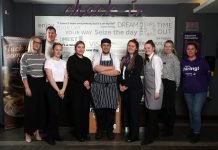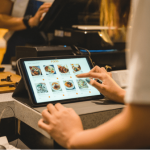Discussions about the “world’s best” this or that are by nature very divisive so when I start an article about where to find the world’s best cup of coffee, I know I am asking for trouble…
Of course, many factors need to come together to create great coffee. You cannot have great coffee without great coffee beans and some varieties are better than others. Growing conditions influence flavour, the roast of the bean changes everything. Let’s also not forget the freshness of the bean, the grind size, the water, the milk, the process or machine used to make the coffee.
There are so many different influences on great coffee, how can I possibly say that one country or another makes better coffee than another? Well, I’m not sure I have the answer, but definitively I can tell you that Australia has the best coffee in the world!!
How do I know this? Well, for one thing I live here and drink a lot of coffee… I also travel to many other places (and countries) and drink coffee, which is a perilous pastime I can assure you.
Australia wins the coffee crown in a couple of different ways. Firstly, it has coffee shops, (roasters, boutiques cafes, emporiums) to impress even the most fickle of coffee snobs. Secondly, and probably most importantly, you can walk into almost any café in any part of Australia and get an average coffee that is probably better than in most other places in the world.
Much of the coffee culture can be traced back to the arrival of Italian and Greek migrants after WW2. They brought their beloved European style Espresso machines and it caught on, so great coffee was available in every café and deli thereafter.
Since then, traditional and new coffee language and creations have been exported to the world, so you can now walk into a café in most places in the world asking for a ‘Flat White’ and they will know what you want (even if what you get is barely drinkable).
Here is a quick summary of the most popular coffee types served in Australia in case you are not sure what to order when you are next here, or if you visit one on the many “Australian coffee shops” popping up around the globe.
Short Black (Espresso)
A Short Black served as a single shot is generally between 25ml-30ml and is extracted in approximately 25-30 seconds. A 1:2 ratio is a great starting point for espresso. Espresso’s are commonly served in an 80-90ml ceramic cup.
Ristretto
In Italian ristretto means ‘restricted’, and it literally translates into your coffee cup. A ristretto is a restricted version of an espresso. It is made by stopping the espresso extraction before the espresso starts to blonde. As a ristretto is less diluted with water it is more intense, with more body and less bitterness. Traditionally a ristretto is 15 to 20ml in volume and served in a ceramic cup.
Short Macchiato
A short macchiato is a 30ml shot of espresso with a teaspoon of hot steamed milk and dollop of micro foam. A short macchiato is served in a 90ml glass.
Long Macchiato
A long macchiato is a double espresso (60ml) served in a glass with a dollop of foam and a teaspoon of hot or cold milk. A long macchiato is served in a 220ml glass.
(And for everyone in Perth, don’t forget the ‘Long Mac Topped Up’ – but everyone else can ignore this!)
Long Black
A Long Black is prepared by adding approximately 2/3rds boiling water into a cup then extracting a double shot of espresso (60ml) over the water. When prepared correctly a Long Black should have a layer of crema across the top.
Flat White
A flat white is prepared in a 200-220ml ceramic cup with a 30ml shot of espresso then topped with steamed milk. In cafes serving specialty coffee you may get a flat white in a 150-180ml. A flat white should have a thin layer of smooth micro foam covering the surface. Probably the most popular coffee in Australia.
Cappuccino
The well-known cappuccino has had some changes in the way it is served over the years. Long gone are the days with the high stacked white foam. Cappuccinos are espresso based with a 30ml shot, then topped with silky thick textured milk. It is essential that milk is textured correctly with silky micro foam. Once the milk is poured into the cup the cappuccino should have a dome and then dusted with chocolate powder. Cappuccinos are served in a 200-220ml ceramic cup.
Latte
A latte (shortened from Caffe Latte) is most commonly served in a 220ml glass. Prepared with a 30ml shot of espresso then topped with silky steamed milk to result in a 10-15mm layer of micro foam.
Mocha – (or Mochaccino)
A mocha is a combination of a cappuccino and a hot chocolate. They are prepared the same way as a cappuccino however chocolate powder is added into the espresso shot and stirred before adding the steamed milk and micro foam. Mochas are generally served in a tall glass with a handle, same as a hot chocolate.
Affogato
An affogato is a great dessert coffee that is a treat during summer and after dinner. It is made by placing one scoop of vanilla ice cream within a double shot of espresso. An affogato can be served in a 220ml glass or ceramic cup.
Piccolo Latte
A Piccolo Latte is a single ristretto shot 15ml -20ml topped with warm silky milk served in a 90ml glass or ceramic cup.
Cortado
The Cortado originated in Spain. Served in a small glass 90ml-130ml, it has a shot of espresso and topped with an equal part of steamed milk with very little micro foam (similar to a flat white).
Magic
Magic coffee originated in Melbourne and is prepared in a ceramic cup 150ml-180ml. It is made with a double ristretto and topped with steamed milk. As it has a double ristretto as its base, a Magic has a creamy syrupy mouthfeel.
About the Author
Tim Johns is a former Hotelier and Managing Partner with Elite Search – a leading hospitality recruitment firm. For more information about Tim and Elite Search visit http://www.elitesearch.com.au and The Elite Hotelier






























